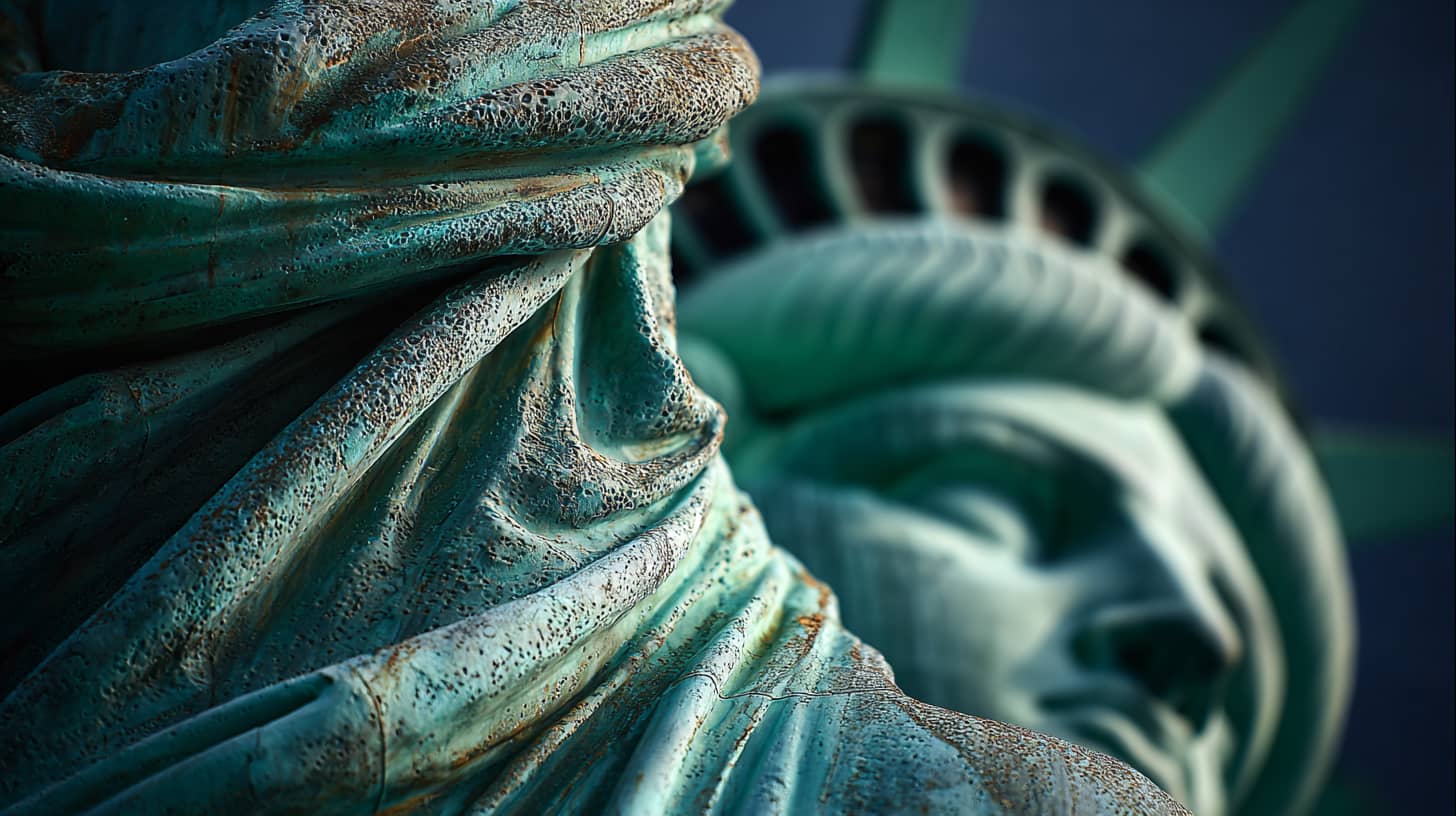The largest outdoor conservation project in the world
How do you protect a 93-meter-high copper statue from the elements? The Statue of Liberty embodies one of the most complex surface protection challenges of all. For over 130 years, it has defied wind, weather and salt air - a masterpiece of corrosion protection technology.
The famous green appearance is no coincidence, but the result of natural patina formation. Copper oxidizes over decades to form a protective layer of copper carbonate. This natural coating is the key to the longevity of the monument.
Why copper patina is the ultimate surface protection
Normal metals rust and disintegrate. Copper, on the other hand, develops a self-protecting surface. This patina acts like a natural seal against further corrosion. What initially looks like wear and tear is actually the most advanced surface protection.
Modern corrosion protection service providers use this principle for industrial applications. Offshore coating services benefit from copper-based systems for maritime environments. Wind turbine coating relies on similar self-protecting mechanisms.
The statue proves it: Sometimes the best coating is the one that the material itself develops.
Challenges of modern monument conservation
Today, the Statue of Liberty is fighting new enemies. Air pollution accelerates chemical processes. Acid rain changes the composition of the patina. Climate change increases temperature fluctuations and humidity.
Specialized surface protection service providers develop innovative solutions. Micro-sealants protect the historic patina without changing the appearance. Invisible coatings leave the natural surface untouched, but offer additional protection.
Conservation requires precise surface analysis service methods. Each area of the statue shows different patina development. Wind-exposed sides age differently than protected areas.
Modern technologies for historic surfaces
How do you treat a surface that is older than modern coating technology? Certified coaters use specially developed preservation methods. UV resistance testing takes place over decades, not months.
Nano-coatings enable minimal intervention with maximum effect. Self-cleaning systems significantly reduce maintenance costs. Salt spray test procedures simulate decades of exposure to sea air.
Quality control Surface protection takes on completely new dimensions for historical monuments. Every intervention must be reversible. Coating damage analysis takes cultural and historical values into account.
Gauges for industrial applications
What works for the Statue of Liberty is revolutionizing other areas. Steel structure coating adopts patina concepts for bridges and high-rise buildings. Highway bridge coating uses self-protecting systems.
Port facility Coating Service benefits from maritime preservation techniques. Industrial hall Coating adapts long-term protection strategies. Metal construction Surface protection relies on proven corrosion protection principles.
Particularly interesting: Coating inspection service develops new monitoring methods. Drone-based inspections detect minimal surface changes. Spectroscopic analyses detect chemical processes at an early stage.
Preventive conservation instead of reactive repair
Modern monument conservation relies on prevention. Regular surface inspection service providers identify problems before damage occurs. Coating maintenance service prevents costly restorations.
Professional coating service companies develop customized maintenance plans. Coating consulting B2B includes historical conservation and modern prevention strategies.
Innovation through tradition
The Statue of Liberty shows: Proven principles combined with modern technology create optimal solutions. Coating expert teams combine traditional craftsmanship with scientific precision.
Coating system planning considers century cycles instead of years. Surface treatment service uses minimally invasive methods. The result: protection for generations to come.
Industrial coating orders benefit from this knowledge. What preserves historical monuments also protects modern infrastructures. Surface protection specialist know-how is transferred to all areas.
The copper-green emblem of freedom proves every day that the right surface technology lasts for centuries.
